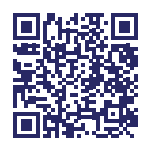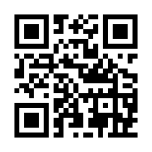Lead Service Line FAQs
Did you know that Buffalo Water treated nearly 23 billion gallons of water on an average year?
Yep! It’s true!
Buffalo Water treats over 60 million gallons of water every day for a population of about 278,000 people. With approximately 825 miles of water main pipe, 23,860 valves, 80,000 service connections, and 7,966 fire hydrants, Buffalo’s water distribution system is maintained, day and night, throughout all seasons.
Buffalo is one of the leading cities for progressive water testing systems. That includes free in-home water testing and ongoing water treatment evaluations at Buffalo Water’s on-site pipe loop laboratory.
If our water testing is so progressive, why is there a concern about lead in water?
For thousands of years, lead pipes have been used to transport water. However, in recent years, there has been heightened awareness and discussion about lead as toxic to the human body. Today, lead material is no longer permitted for use in water pipes. Buffalo Water uses ductile iron for its watermains, but many private homes in the City were constructed with lead pipes that connected to city watermains. These pipes, called service lines, were run underground from the watermain to the home and generally into the basement. As a result of these historic construction practices, many private homes throughout the city may still have a lead service lines (LSL) supplying water to the home.
Due to the presence of LSLs, Buffalo Water has been using an optimized corrosion control treatment for many years to prevent the corrosion of lead. This corrosion control treatment creates a protective barrier along the inside walls of the LSLs, which largely prevents lead from entering the water. However, some homes may still test positive for lead in water due to the old LSLs or lead plumbing, especially if the pipes are disturbed or if the water has not been flushed or used for a long time.
Fact: Since 1st century BC, lead was used in the Mediterranean basin and throughout the Roman Empire (National Center for Biotechnology Information). Lead piping was used in nearly every major U.S. city for plumbing applications in 1900. Lead was the preferred material used for pipes because of its strength against leaks and its soft workability, which make it easy to form into pipes.
Who maintains the water service lines?
Water mains are generally buried under the street or sidewalk. They are owned and maintained by Buffalo Water. Residential service lines connect to the water distribution mains. They run underground and into the home. Residential service lines are privately owned by the homeowner.
What is Buffalo doing about the Lead Service Lines (LSLs)?
In addition to the corrosion control treatment used to prevent lead service line corrosion, Buffalo Water is actively working to remove LSLs entirely. Here are three programs that Buffalo Water is currently utilizing to help identify homes with LSLs so they can replace them with non-lead service lines:
311 Tap Sampling Program – Any homeowner or tenant can call the Mayor’s 311 Call & Resolution Center and request a free in-home tap sample for lead. If your home has a LSL, and tap sample tests showing elevated lead levels in your water, even after flushing the pipes, Buffalo Water will replace your LSL at no cost.
Watermain replacements – Buffalo Water has a capital improvement program that replaces thousands of feet of watermains each year. These upgrades are designed to improve water flow, water sustainability, and water resiliency in our community. Any LSLs discovered during one of these projects will be replaced at no cost to the homeowners.
As of now, Buffalo Water has removed thousands of lead service lines. Buffalo Water is committed to removing LSLs through its policies and water system upgrade projects.
How can I help with this process?
For several years Buffalo Water has been developing a LSL inventory that identifies every home in the city with a LSL. Buffalo Water is using this database to plan the removal of those LSLs strategically. However, with over 65,000 residences in Buffalo, we need your help identifying all of those homes.
There are three ways you can help with this process:
1. Buffalo Water needs your help to identify the material used in every residential service line. If you live in the City of Buffalo, please complete a brief questionnaire regarding your water service line with Buffalo Water’s partner, 120Water. Click here or scan the QR code below to enter in your home service line information.

2. You can request to have your water sampled by Buffalo Water by calling 311. This is a good way to check for lead in your water.
3. You can volunteer to participate in Buffalo Water’s compliance sampling pool so they will test your water quality on an ongoing basis along with other residents across the City. Volunteer by calling 311.
What do I do if I see my property has been identified as “Lead”?
1. You can request to have your water sampled by Buffalo Water by calling 311. This is a good way to check for lead in your water.
2. You can volunteer to participate in Buffalo Water’s compliance sampling pool, so they will test your water quality on an ongoing basis along with other residents across the City. Volunteer by calling 311, visit Buffalo Water Lead Sampling Compliance Pool or scan the QR code below and complete the form.

How can I learn more about Buffalo’s Water?
Buffalo Water customers can view an annual Water Quality Report online at Buffalo Water. It’s public, so you can review it anytime.